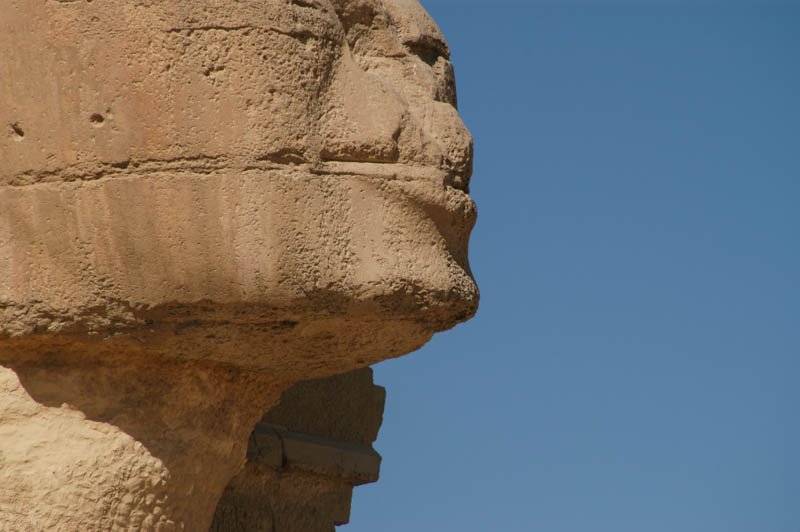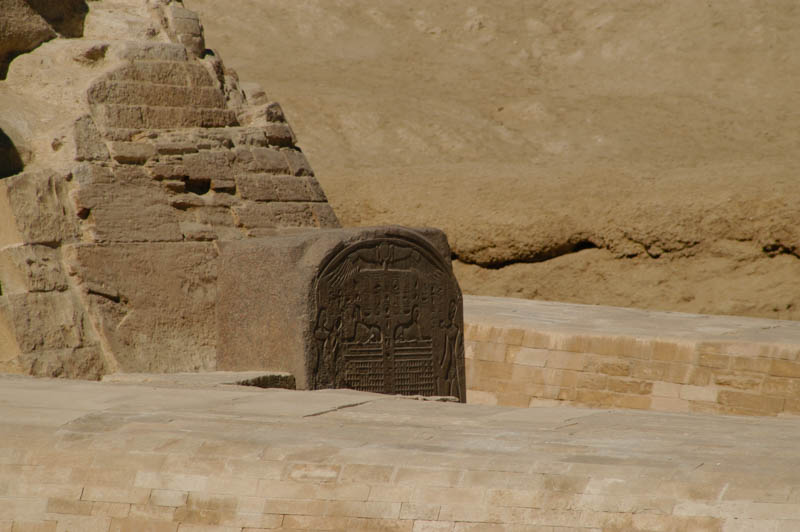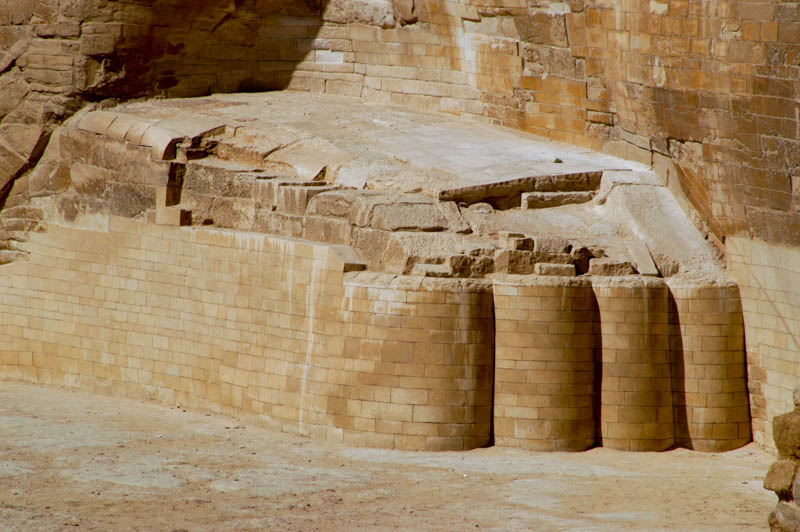
The face of the sphinx is well known, but it is incomplete. The nose is missing, and the huge false beard is also gone. It has been used for target practice by armies from the Mamlukes to Napeoleon (although the theory that the nose was blown off by artilery shells is not supported by fact. )
It is assumed that the Sphinx was buried in sand shortly after its creation — it lies in a low area on the plateau and the desert encroaches on everything here. It was first uncovered by Tuthmose IV, after he dreamed that if he uncovered the monument, he woud be king. He did — and subsequently took the throne. The “dream stele” that sits between the Sphinx’s paws tells this story.

The sphinx is carved from an outcrop of soft limestone 240 feet long anda bout 60 feet high. The head and headdress are of a harder stone, and is less eroded. The sphinx was not build up from blocks (despite the way it looks post-repairs), but was dug out of the outcropping and down to the bedrock.

Many of the “repairs” in the last few centures have actually damaged the Sphinx even more. In the 1980s, indjections of a ‘stablizer’ to the stone was supposed to stop the erosion. It in fact made it worst — pieces of the overly soft stone started to flak off. Then, concrete was used, which is too rigid for the structure, as the limestone expands and contracts differently. An effort in the 1990s has attempted to undo some of that damage under the ausipices of the Supreme COuncil of Antiquities (SCA) and Dr. Zawi Hawass. THese effots also include plans to keep the rising subsurface water from affecting the low-lying monument.